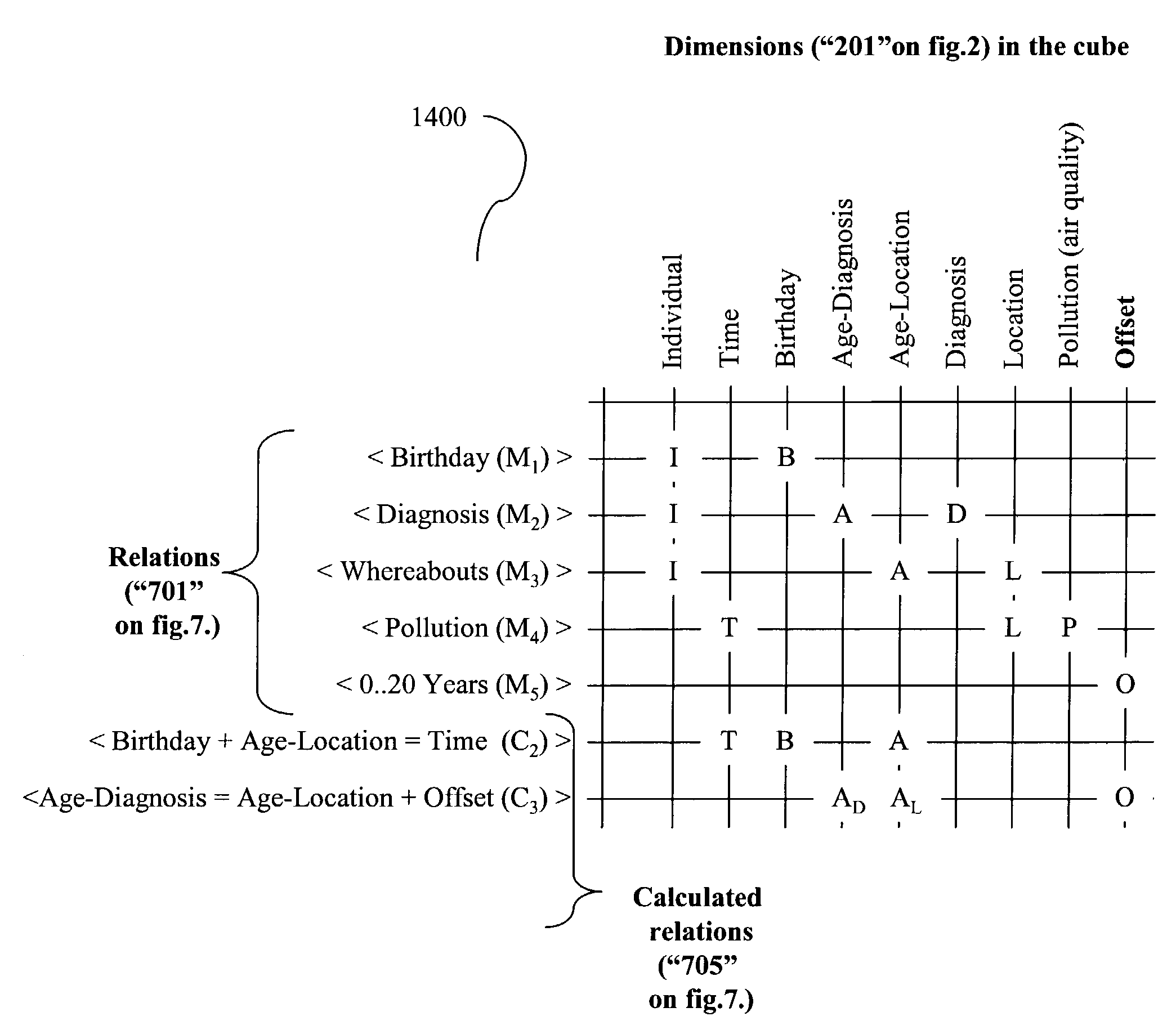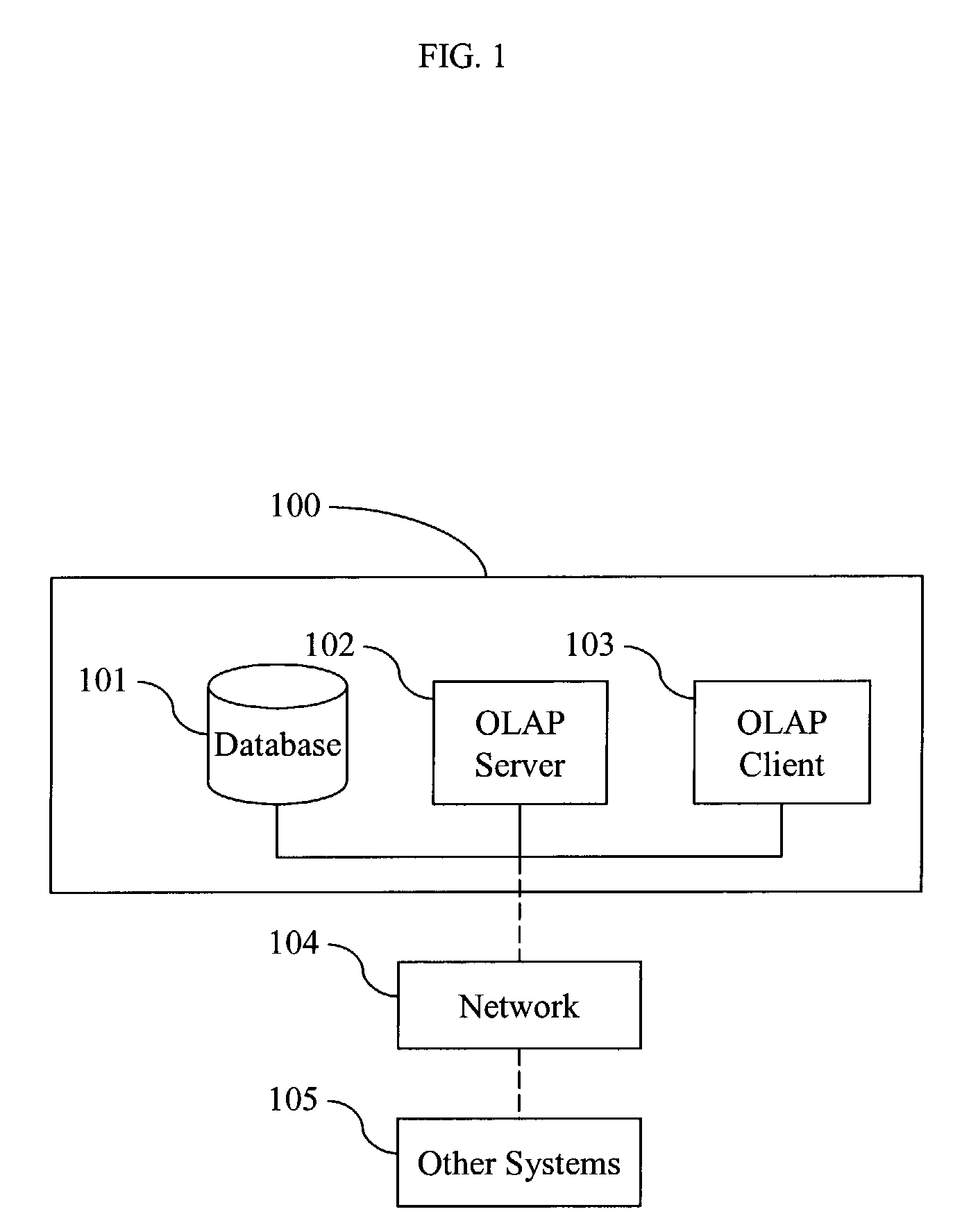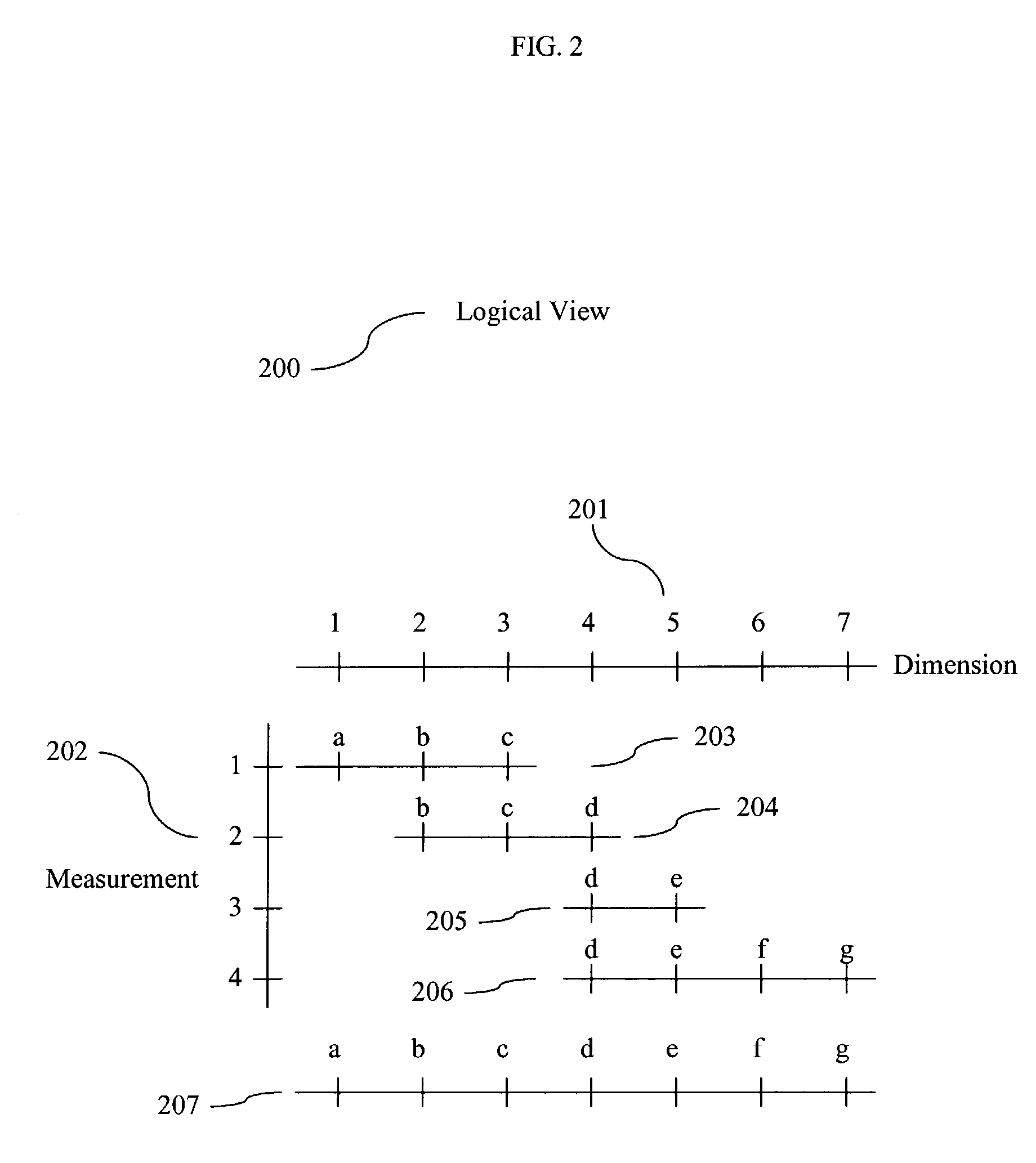Populating data cubes using calculated relations
a technology of data cubes and calculated relations, applied in the field of data management systems, can solve the problems of complex process of synthesizing measurements into longer strings of information, requiring non-standard operations, and operators rendered useless, and achieve the effect of eliminating ambiguities
- Summary
- Abstract
- Description
- Claims
- Application Information
AI Technical Summary
Benefits of technology
Problems solved by technology
Method used
Image
Examples
examples
[0082]Given a user defined eight-dimensional hypercube with the (self-explanatory) dimensions: Individual, Time, Birthday, Age-Diagnosis, Age-Location, Diagnosis, Location and Pollution. Set the relations in 701 to be Birthday, Diagnosis, Whereabouts and Pollution. Extracting individual measurements from each of the relations, respectively, might reveal measurements such as M1=(id, birthday), M2=(id, age.diagnosed, lung-cancer), M3=(id, age.location, location) and M4=(location, time, air-quality). Here id, time, birthday, age.diagnosed, age.location, lung-cancer, location and air-quality respectively represent fixed attributes from the dimensions in the hypercube. The measurements M1, M2, M3 and M4 can be joined, per se, using the natural join to form a point in the hypercube with the eight attributes shown. On the other hand, this may not be meaningful at all, unless a calculated relation is present enforcing the implicit connections between the dimensions Birthday, Time and the tw...
PUM
 Login to View More
Login to View More Abstract
Description
Claims
Application Information
 Login to View More
Login to View More - R&D
- Intellectual Property
- Life Sciences
- Materials
- Tech Scout
- Unparalleled Data Quality
- Higher Quality Content
- 60% Fewer Hallucinations
Browse by: Latest US Patents, China's latest patents, Technical Efficacy Thesaurus, Application Domain, Technology Topic, Popular Technical Reports.
© 2025 PatSnap. All rights reserved.Legal|Privacy policy|Modern Slavery Act Transparency Statement|Sitemap|About US| Contact US: help@patsnap.com



